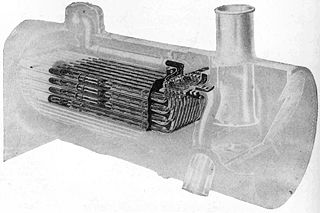The Baltimore & Ohio; the California & Western; the Cape Cod & Hyannis; the Filmore & Western; the Gettysburg; the Roaring Camp & Big Trees; the Sierra; the Yosemite Mountain-Sugar Pine; the Yolo Short Line; and the Yreka Western railroads. Yup, I’ve ridden these rails, all, behind steam and diesel alike. Never rode electric, but those tourist pikes exist, too, you know.
My first sighting ever of a living, breathing steam-powered train, was a purely chance happening. It was sometime during my childhood although I can’t exactly say when. Provided below are details of that one as well as a second encounter:

An excursion was being conducted on the Western Maryland Railway out of Baltimore and I and a friend witnessed this run at a location along the line known as Sudbrook. We were walking along a parallel road when all of a sudden what came into view was something that I had not seen before: An old-time steam locomotive pulling a string of vintage passenger cars. It is a sure bet that the two of us talked about what we just saw. I can’t speak for my friend, but I was in awe.
My second such steam excursion train encounter happened on a cold Feb. 5, 1972 day, again on the Western Maryland Rwy., in this instance at a town on the line farther west. That town: Glyndon, Maryland. The engine number was 2102, a former Reading (pronounced “red ing” like its namesake town in Pennsylvania – the Keystone State) Railroad model T1. The steam engine was something else and what a contrast it created with the snow-covered landscape.
Strictly from an air-quality point of view (or rather a lack thereof), the locomotive powering that excursion (when conducted on an active revenue-producing railroad, such an operation is typically classified a “special movement”) was sending smoke billowing skyward. Not having done the necessary research, I do not know whether the loco was an oil- or coal-burner. Why might this matter? Oil as a fuel, when burned, may in fact burn cleaner. I say this because, for a time, many if not all steam locomotives operating in California in mainline duty burned oil and not coal. This could have come about as per a California Public Utilities Commission directive or it may have been on account of an abundance of oil in state, or it could have had something to do with both. Again, I would need to do additional research on this in order to know for sure.
![320px-LOADING_PLATFORM_AT_UNION_STATION_IN_KANSAS_CITY,_MISSOURI_THE_OLD_ENGINE_PULLED_A_TRAIN_FROM_NEW_YORK_WHICH_WILL..._-_NARA_-_556022[1]](https://alankandel.scienceblog.com/files/2015/11/320px-LOADING_PLATFORM_AT_UNION_STATION_IN_KANSAS_CITY_MISSOURI_THE_OLD_ENGINE_PULLED_A_TRAIN_FROM_NEW_YORK_WHICH_WILL..._-_NARA_-_5560221.jpg)
Meanwhile, in adding to the aura, atmosphere, ambiance, spectacular vistas abound on many a route where these operations are in existence.
In closing, being that I haven’t yet taken an electric-powered train excursion, I just might have to make time to do this. It should come as no surprise that this method of train-propulsion technology is undoubtedly the cleanest one of all, from an air-quality standpoint, that is.
Suffice it to say, I know of some really good – and scenic – pikes out there.
Middle image above: Charles O‘Rear, U.S. National Archives and Records Administration collection
Department of corrections: The name: Yosemite Mountain & Sugar Pine (the way it originally appeared in the above post), is incorrect. The article has since been revised and now includes the correct nomenclature.
– Alan Kandel
This post was last revised on Dec. 12, 2019 @ 8:18 a.m. Pacific Standard Time.
![NewOrleansHUDRedStreetcarRiverfrontCanal[1]](https://alankandel.scienceblog.com/files/2013/01/NewOrleansHUDRedStreetcarRiverfrontCanal1.jpg)